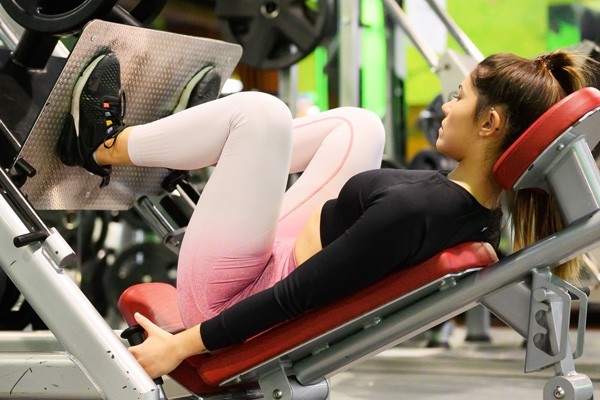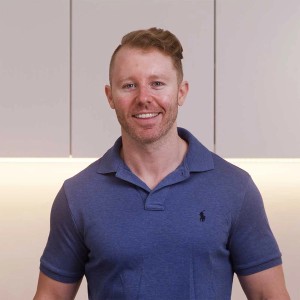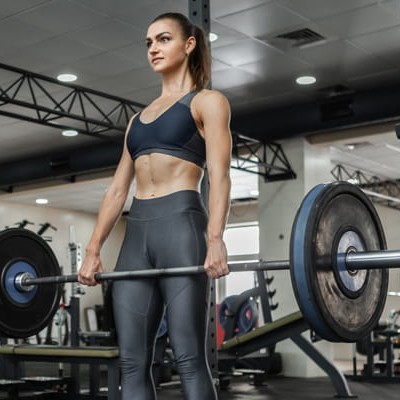The Best Foot Placements for Leg Press Muscle Growth

What are the best foot placements for a leg press during training?
One of the oldest tips often shared by keen gym-goers has been to have a narrow feet position for leg press and squats, with your toes pointing forward.
“This will grow your quads faster!” they say.
But does science agree?
One study used trained subjects with nine years of leg press experience and ten of squats, to do eight different testing sessions on different foot placements for leg press. They did every combination of:
- Wide stance vs. close stance foot placements for leg press (hip-width vs. twice hip-width)
- Low leg press foot position vs. high leg press foot position
- Feet pointed straight ahead vs. feet turned out 30 degrees.
So what did they find?
By using electromyography (which works by placing electrodes on a muscle and recording their activation) they found minor differences in the calves and hamstrings depending on the leg press feet position, but the average readings for the quads weren’t significantly different between all eight variations of foot placements for leg press!
Another study asked the same questions of foot placements for squats amongst master lifters who had a squat of over 200 kilograms, and the same conclusion was drawn: the width of a squatting stance makes basically no difference.
But some of the hardest and seasoned gym-goers still weren't convinced.
In 2021, another study was conducted into the best foot placements for leg press, in conjunction with trained subjects.
Using 13 females and 15 males, the study had the athletes perform six leg presses at 70 per cent of their one-rep max, doing so using five different foot placements for leg press:
- Hip-width, feet pointed straight ahead
- Hip-width, feet turned out 45 degrees
- 1.5 times their hip-width, feet pointed straight ahead
- Leg press positions 1 and 2 at a controlled tempo (2 seconds on the way down, 2 seconds on the way up) and by exploding on the way up for one rep
- A wide stance technique at a controlled tempo.
And what was found this time?
Again, using electromyography on all muscles of the quads and glutes, the study concluded:
“The inclined leg press exercise produces the highest muscle activation in the vastus medialis, regardless of the velocity, feet stance, or gender.”
The authors add that given there seems to be no difference in muscle activation when it comes to foot positions for leg press, then we should use whatever stance we prefer when training legs.
But as I’ve touched on previously, electromyography isn’t always the best indication of muscle growth, it’s simply just a measurement of muscle activation. Other studies have used more superior ways of measuring muscle like ultrasound (for muscle growth) which is a much better indication.

Focusing on things like foot placements for leg press isn’t going to make much difference to your muscle growth, but focusing on something like training frequency can.
How many times can I train my quads per week?
Research shows us that muscle protein synthesis levels (your body using protein to build and repair muscle) return to normal after 36 hours.
This means a particular muscle group (in this case, your quadriceps) are ready to be trained again!
For example, you’re better off training your glutes on a Monday and again on a Wednesday when you’re fully recovered, as opposed to once per week in a traditional muscle growth workout split.
But women have it even better here than men!
A meta-analysis reviewing 24 studies here in Australia found that women can train their quads, hamstrings, glutes, and calves two to four days per week.
Other research finds that women recover their strength faster than men after a taxing workout, meaning they’re able to jump back in and train the same muscle group again.
So focusing on training frequency when it comes to your legs will yield better results than worrying about something trivial like foot placements during exercises.

The bottom line on foot placement and angles
Is that foot placements for leg press are unlikely to make any difference when it comes to growing your quads.
You should just use the stance during leg press and squats that is the most comfortable. Further research might use ultrasound to measure muscle growth after an extended period of training legs with nutritional intake, including protein, identical across the board.
However, at this stage, the recommendations are to place your feet wherever you like during leg presses and squats, as one particular foot placement for a leg press is not likely to be superior to another.
Focusing on training frequency is a better strategy at this stage for optimal quads growth.

Dayne Hudson
Like many, Dayne was once desperate to lose weight and get into shape. But everyone he asked, everything he read, lead to the same place... nowhere.
His journey started there - researching science journals and completing a Sports Nutrition Specialist qualification so he could make weight loss easier.
References:
- Escamilla RF, Fleisig GS, Zheng N, Lander JE, Barrentine SW, Andrews JR, Bergemann BW, Moorman CT 3rd. Effects of technique variations on knee biomechanics during the squat and leg press. Med Sci Sports Exerc. 2001 Sep;33(9):1552-66. doi: 10.1097/00005768-200109000-00020. PMID: 11528346.
- Mills KR. The basics of electromyography. J Neurol Neurosurg Psychiatry. 2005;76 Suppl 2(Suppl 2):ii32-ii35. doi:10.1136/jnnp.2005.069211
- Escamilla RF, Fleisig GS, Lowry TM, Barrentine SW, Andrews JR. A three-dimensional biomechanical analysis of the squat during varying stance widths. Med Sci Sports Exerc. 2001 Jun;33(6):984-98. doi: 10.1097/00005768-200106000-00019. PMID: 11404665.
- Martín-Fuentes I, Oliva-Lozano JM, Muyor JM. Influence of Feet Position and Execution Velocity on Muscle Activation and Kinematic Parameters During the Inclined Leg Press Exercise. Sports Health. 2021 Jun 4:19417381211016357. doi: 10.1177/19417381211016357. Epub ahead of print. PMID: 34085847.
- Vigotsky AD, Beardsley C, Contreras B, Steele J, Ogborn D, Phillips SM. Greater electromyographic responses do not imply greater motor unit recruitment and 'hypertrophic potential' cannot be inferred. J Strength Cond Res. 2017 Jan;31(1):e1-e4. doi: 10.1519/JSC.0000000000001249. Epub 2015 Dec 11. Erratum in: J Strength Cond Res. 2017 Feb;31(2):e66. PMID: 26670996.
- MacDougall JD, Gibala MJ, Tarnopolsky MA, MacDonald JR, Interisano SA, Yarasheski KE. The time course for elevated muscle protein synthesis following heavy resistance exercise. Can J Appl Physiol. 1995 Dec;20(4):480-6. doi: 10.1139/h95-038. PMID: 8563679.
- Judge LW, Burke JR. The effect of recovery time on strength performance following a high-intensity bench press workout in males and females. Int J Sports Physiol Perform. 2010 Jun;5(2):184-96. doi: 10.1123/ijspp.5.2.184. PMID: 20625191.
Related Blogs

Leg Extensions vs Squats for Quadricep Growth
Posted by Dayne Hudson
Estimated reading time: 5 minutes

The Best Hamstring Exercises for Muscle Growth
Posted by Dayne Hudson
Estimated reading time: 5 minutes

The Three Principles of Muscle Growth
Posted by Dayne Hudson
Estimated reading time: 10 minutes



























